How Often You Should Really Clean Your Pet Bowls
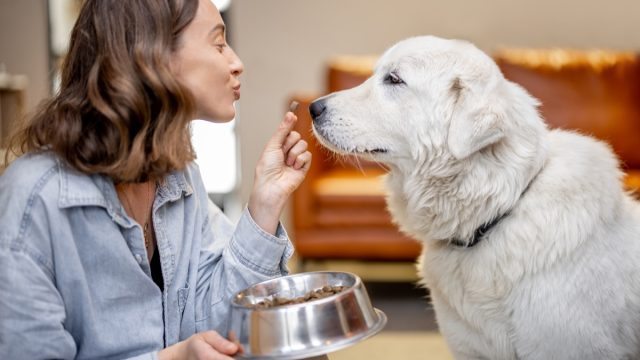
If you refer to your pet as your “child,” you’re definitely not alone. Around 80 percent of U.S. pet owners consider their pet to be just another member of their family, according to the American Veterinary Medical Association (AVMA). As with a child, you probably spend a lot of time cleaning up after your furry family member. But it’s more than just moving toys back where they belong or scooping out your cat’s litter box. You should also be practicing proper hygiene for your pet’s food. We consulted experts to find out just how often you should really clean your pet bowls. Read on to find out if you’re keeping your pet and the rest of your household safe.
READ THIS NEXT: The Biggest Mistake New Pet Owners Make, Vets Say.
Dirty pet bowls can be putting owners and animals at risk.
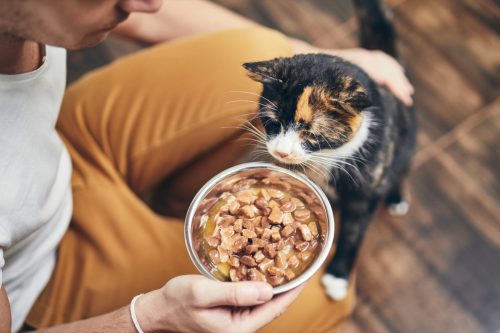
A study from veterinary nutritionists at North Carolina State University recently broke down the dangers of dirty pet bowls. According to the research, which was published April 6 in PLOS One, “in-home pet food handling and food dish hygiene practices can have adverse health impacts for both humans and pets,” especially in terms of bacteria growth and exposure.
“Pet feeding involves interplay between the pet, the owner, and the food,” the researchers wrote. “This interaction creates the opportunity for mutual exchange of microbial contaminants from food or water, dishes, and the food storage or preparation environment, which can cause health consequences for both humans and pets.”
Cleaning the bowl regularly enough can prevent problems.
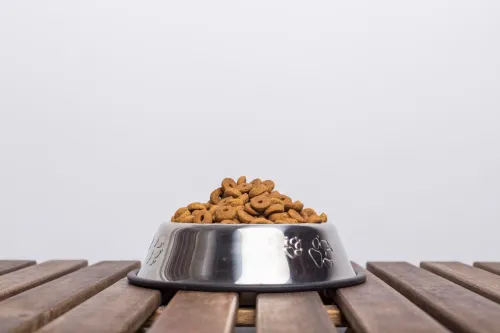
Many owners don’t realize that pet bowls are one of the most germ-filled places in their homes, Madelyn Harris, a dog expert and leading contributor for Doodle Dog Club, tells Best Life. According to Harris, these dishes can contain bacteria like E.coli or Salmonella, as well as other pathogens like mold and yeast. “Because of this, you should be washing your pet’s food and water bowls more frequently than you probably think,” she says.
According to Diana Ludwiczak, a certified dog trainer in New York City, pet bowls actually need to be cleaned every day. “You wouldn’t eat your food on a dish that hasn’t been washed, so why would that be okay for your furry family members?” Ludwiczak asks.
Of course, it’s not just about treating your pet like any other family member. As Ludwiczak explains, bacteria from food debris builds up on pet bowls if they are not cleaned on a daily basis—and if bacteria has contaminated these dishes, you won’t even know it.
“Bacteria buildup is not something we can see with our eyes—it’s microscopic,” she warns. “Your pet can become sick due to constantly ingesting bacteria from their food bowl. Pets often lick their humans too, so making sure they eat out of a clean bowl will mean less germs are spread to you.”
For more pet advice delivered straight to your inbox, sign up for our daily newsletter.
You can clean your pet bowls the way you clean most other dishes.
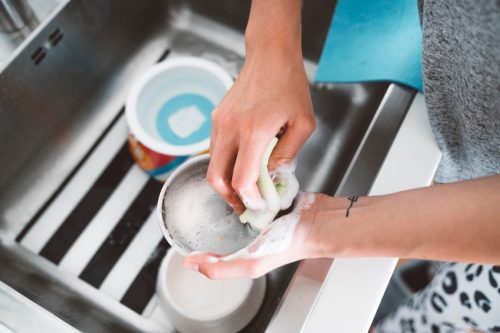
To clean your pet bowls daily, Crystal Litzenberger, a vet tech who has been practicing in New York City for more than 20 years, recommends simply washing it like any other dish: “Use some dish soap, grab a sponge, and get to work,” she says.
Some experts say you can also just throw your pet’s dish into your dishwasher, but Linda Simon, MVB, a veterinary surgeon and a consulting veterinarian for FiveBarks, tells Best Life she advises against this method. According to Simon, the dishwasher often ends up not cleaning the bowls thoroughly enough, and “residue can be left.”
Most people are not cleaning their pet bowls daily.
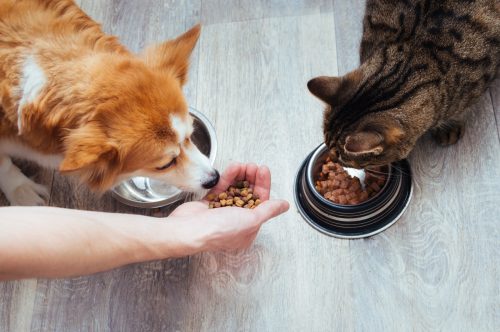
The U.S. Food and Drug Administration (FDA) also has official guidelines for pet owners when it comes to safely handling their food and cleaning their bowls. The only issue? Most Americans aren’t aware of this. According to the PLOS One study, less than 5 percent of people knew there were any guidelines to follow. Daily pet bowl cleaning is part of the FDA’s recommendations, but due to the general lack of knowledge on this guidance, the researchers found that only 12 percent of dog owners wash their pets’ bowls that often.
The agency’s guidelines also indicate that owners should be washing their owns hands before handling pet food and using a clean food scooper to protect their pets against foodborne illnesses. According to the study, only 22 percent are following the hand washing recommendation and just 13 percent are cleaning the utensils they use to scoop pet food with after every use.
Emily Luisiana, DVM, lead author of the study and a veterinary nutritionist at Friendship Hospital for Animals in Washington, D.C., said in a statement that the study was started after she and her colleagues realized that there were actually FDA guidelines on the matter. “We realized that, when it came to our own pets, we all had different pet food storage and hygiene practices,” Luisiana explained, per AARP. “Pet owners should know that pet food bowls can harbor bacteria and that recommendations exist for minimizing that risk.”